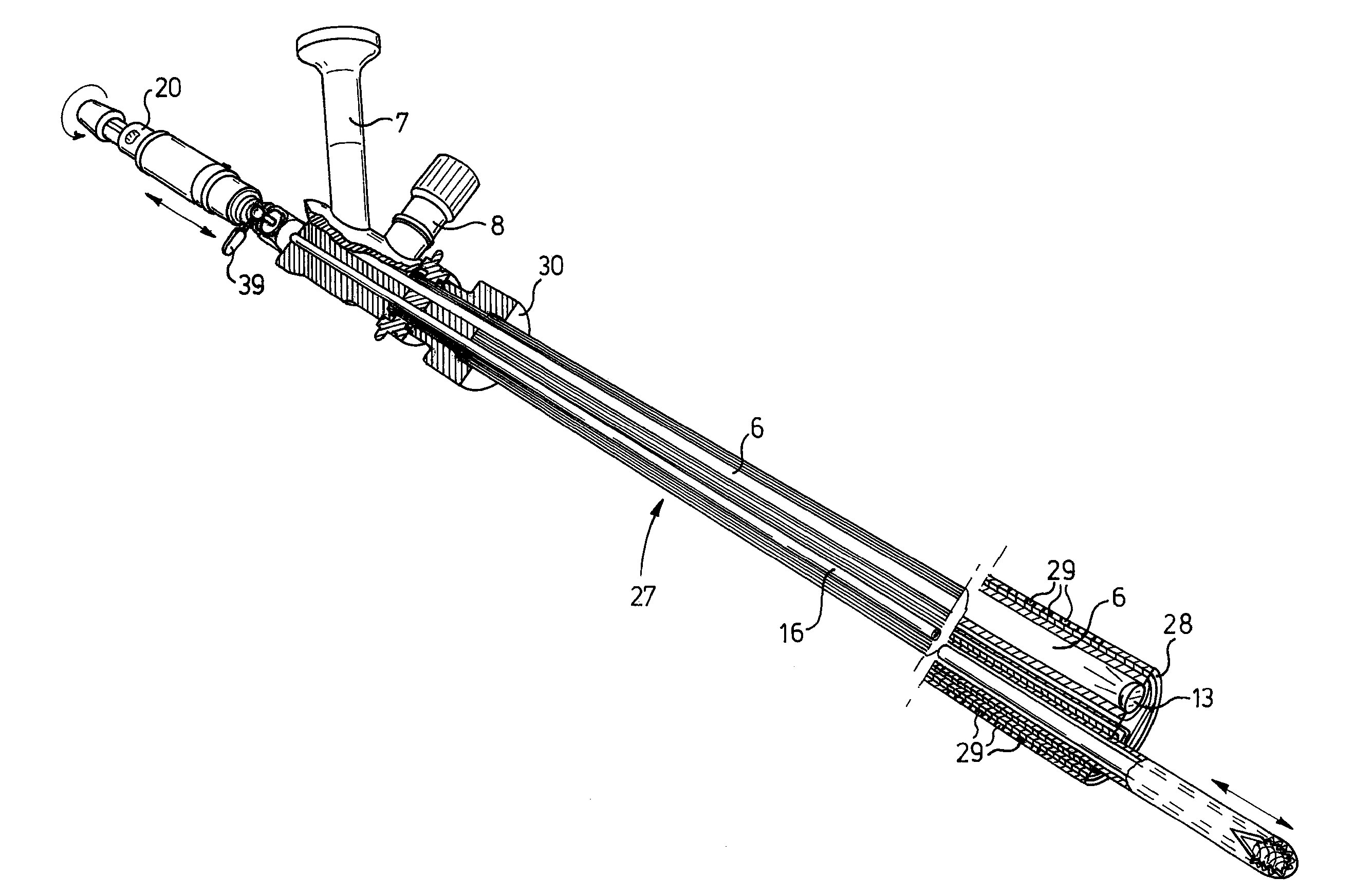Surgical endoscopic cutting device and method for its use
a cutting device and endoscope technology, applied in the field of surgical endoscope cutting devices, can solve the problems of high-frequency electric current leading to internal and external burns, high-risk electrolyte displacement, and high time-consuming operations
- Summary
- Abstract
- Description
- Claims
- Application Information
AI Technical Summary
Benefits of technology
Problems solved by technology
Method used
Image
Examples
Embodiment Construction
[0028] The endoscopic cutting device according to the invention is indicated in its entirety by 1 in FIG. 1. It comprises a viewing / receiving part 3, which is shown in FIG. 2, a cutting part 2, which is shown in greater detail in FIGS. 4 and 5, and an insertion mandrel, which is shown in FIG. 6.
[0029] With reference to FIG. 2, it can be seen that the viewing / receiving part 3, is composed of an outer tube 4 in which a main channel 5 and viewing channel 6 are defined. Viewing channel 6 ends at one side in a lens 13 and at the other side in a viewing tube 7, on which an eyepiece or camera connection is placed. A connection 8 for a light source is also present, for connection to a fibre optics bundle which provides for lighting at the end of lens 13. Near the control end, tube 4 is provided with a fluid inlet 9 connected to a hose 12, for adding a physiological salt solution.
[0030] A shut-off valve is indicated by 10.
[0031] The length of the actual outer tube 4, is indicated by A and...
PUM
 Login to View More
Login to View More Abstract
Description
Claims
Application Information
 Login to View More
Login to View More - R&D
- Intellectual Property
- Life Sciences
- Materials
- Tech Scout
- Unparalleled Data Quality
- Higher Quality Content
- 60% Fewer Hallucinations
Browse by: Latest US Patents, China's latest patents, Technical Efficacy Thesaurus, Application Domain, Technology Topic, Popular Technical Reports.
© 2025 PatSnap. All rights reserved.Legal|Privacy policy|Modern Slavery Act Transparency Statement|Sitemap|About US| Contact US: help@patsnap.com



